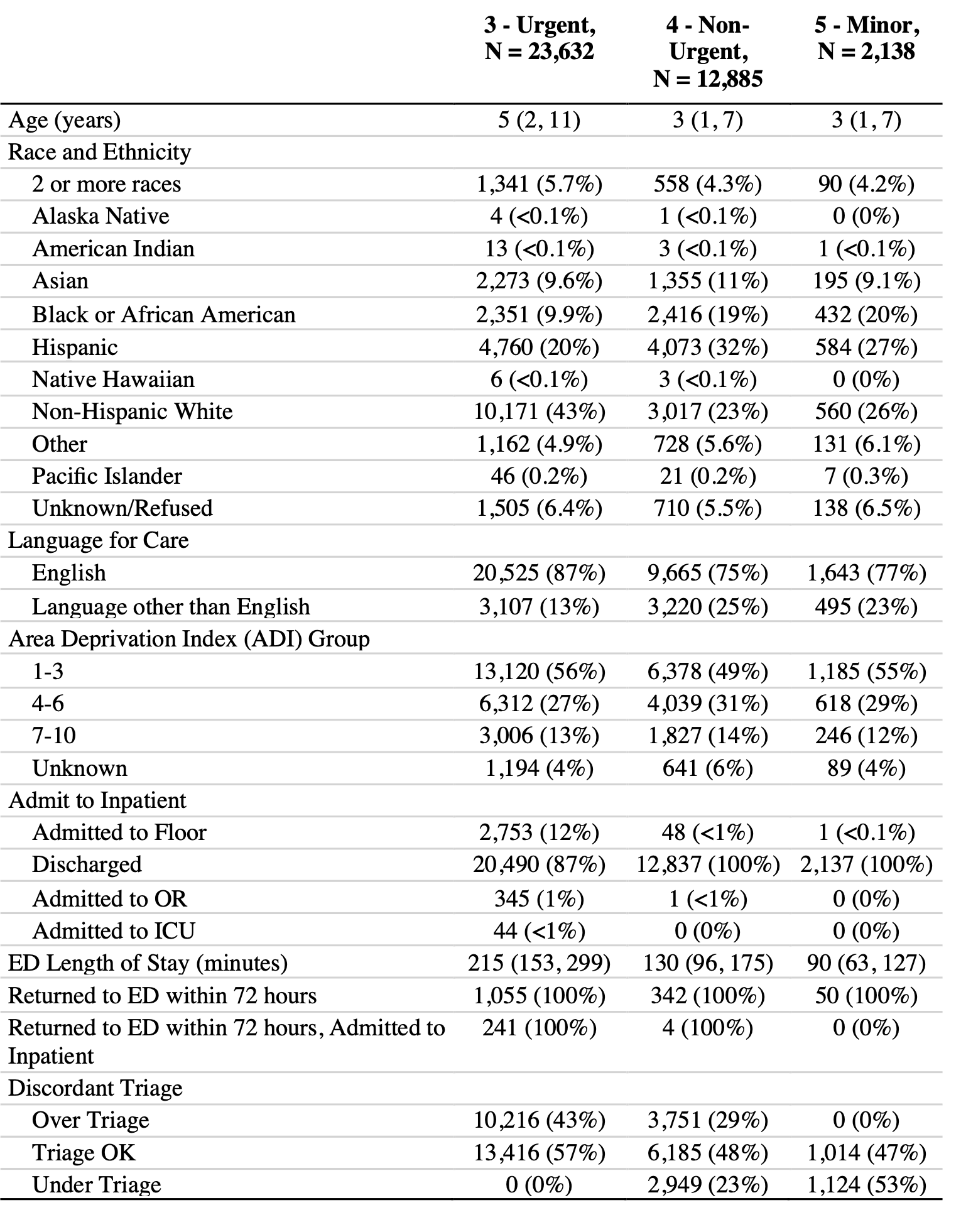Emergency Medicine
Session: Emergency Medicine 7: Emergency Medical Services
213 - Disparities in Triage Discordance by Race, Ethnicity, and Language for Care in an Academic Pediatric Emergency Department.
Sunday, May 5, 2024
3:30 PM - 6:00 PM ET
Poster Number: 213
Publication Number: 213.1730
Publication Number: 213.1730
- KJ
Kaileen Jafari, MD (she/her/hers)
Assistant Professor
University of Washington School of Medicine
Seattle Children's Hospital
Seattle, Washington, United States
Presenting Author(s)
Background: Minoritized patients make up disproportionate amounts of low acuity triage groups in United States Emergency Departments (EDs), suggesting the possibility of bias in triage assignments. Triage discordance, defined as when ED resources used are different from initial triage score predictions, can be used as a proxy for triage accuracy. Recent data suggests discordant triage may be common, though little is known about the interaction with race, ethnicity, and language for care.
Objective: To determine the prevalence of discordant triage among moderate and low acuity pediatric ED encounters and the interaction with patient race, ethnicity, and language for care.
Design/Methods: Retrospective analysis of electronic healthcare record data for low and moderate acuity (ESI score of 3,4, or 5) pediatric ED encounters from 2019 at an academic referral hospital. Our primary outcome was triage discordance, which we defined as discordance between resource used and resources predicted by the ESI level. Logistic regression was used to assess discordant triage for ESI 3 (overtriage only) and ESI 5 (undertriage only), and multinomial regression was used for ESI 4, by race and ethnicity and by language group.
Results: Triage discordance occurred in 47% (n=18,040) of encounters. Black and Hispanic patients had higher odds of undertriage for ESI 5 (aOR 1.21, 95%CI 1.01-1.46 and 1.27, 95%CI: 1.07-1.52, respectively) and Black patients were more likely to be overtriaged in ESI 3 (1.18, 95% CI 1.09-1.27). Those with a language other than English for care had higher proportions of overtriage for ESI 3 (1.08, 95% CI 1.04-1.12) and undertriage for ESI 5 (1.23, 95%CI 1.11-1.37).
Conclusion(s): We found high rates of triage discordance in our pediatric ED, with significant associations with race, ethnicity, and language for care. Future research should evaluate the source of triage discordance and develop quality improvement efforts to improve equitable care.


.png)
